Bimonthly Membership Meeting
Wednesday, October 7, 2020
7:30 PM -- 10:00 PM
Virtual Zoom Platform from Pittsburgh, PA
At least 76 individuals participated in 3RBC's October meeting - the club's second virtual meeting held on the Zoom platform. The meeting featured Frank Izaguirre, who presented "Field Guides and Environmental Thinking."
3RBC President Sheree Daugherty called the meeting to order at 7:30 p.m. She and other club officers made the following announcements and reports.
-
• Sheree began by thanking all the members for their continued support during this most unusual and difficult time. She noted that the club's membership is a great, great group of people. As a case in point, she mentioned that, even now, club membership continues to grow. And the membership's generosity has been outstanding, with strong renewals, and a number of members donating extra money to help cover for those that are having financial difficulty.
She also announced that, because the health and well-being of the club's members is a top priority, 3RBC will continue to hold virtual meetings until such time as it is safe to one once again meet face-to-face. She acknowledged the emotional roller coaster that our current situation is producing: some days are tough, while others seem almost normal. She encouraged everyone to have heart and look forward to the time that we can get bird together again. She then turned the floor over to various officers for their reports.
• The Peregrine Editor Paul Hess announced that the next issue would again be eight pages in length and would contain the usual fine variety of material, though somewhat different than usual, since, due to the pandemic, there are no outing reports. He began by announcing that the Audubon Society of Western Pennsylvania (ASWP) will hold its annual Christmas Bird Count. ASWP's Brian Shema relayed to Paul that those interested should check ASWP's website for all the details, since there are too many to put in a Peregrine article.
Sheree's "President's Message" column will retell the fabulous story of the restoration of the Bald Eagle to Pennsylvania, a story of national interest, especially the fact that Pennsylvania played a key role in developing a highly successful reintroduction process, with Bald Eagle nests in Pennsylvania going from just three in the early 1980s to more than 500 estimated nests now.
Tom's "Observations" column will feature part two of his very interesting and marvelously detailed description of Cedar Waxwing natural history, supplemented by observations out his back window.
Next, Editor Hess relayed that Mike Fialkovich's bird report for our area for the June and July period is one of the longest ever. The report is illustrated with some very good and unusual photos.
Finally, he noted that Sal Ingraham has done an original cartoon just for The Peregrine.
• Before beginning his treasurer's report, Tom Moeller remarked that, since Paul Hess does not like to blow his own horn, he was sharing a teaser of Paul Hess's article, "COVID-19 Prompts New Research and Creates New Birders." which will appear in the November issue of Birding magazine. The preview was sent to Tom by Ted Floyd.
Moving on to his financial report, Tom went on to say that, due to the Coronavirus, and until things are more settled, the club has instituted a moratorium on ending the memberships of people who have not yet paid their dues. Therefore, 3RBC has 20 memberships held over since their March and June due dates.
With that number, the club has a total of 319 memberships, and ten have joined since virus restrictions began, with four joining in August alone! Birding is more popular than ever, as people discover a hobby one can practice outdoors and with limited contact with others.
He was also happy to report that 3RBC has a growing number of Student/Youth memberships: six at last count.
On behalf of the club, Tom extended sincere thanks go to those who have renewed their memberships during these strange times and to the many who have increased their monetary commitment to the club.
• Wearing his Webmaster hat, Tom Moeller, reported that the obvious big technical development for 3RBC is the use of the Zoom platform. He explained that the club's last Zoom meeting used the University of Pittsburgh's Zoom account, thanks to Tessa Rhinehart. Since the Coronavirus in all likelihood will prevent us from gathering for live meetings for some time, the club purchased its own Zoom account after the August meeting. In the meantime, he has been trying to work out any bugs in its use, especially problems with users seamlessly joining a meeting. He hoped that everyone had no problem logging in. He admitted that it is not as good as seeing one another in person, but, for the present, it seems to be the best vehicle for meetings.
He also reminded members that he is working on recording each meeting for display on the website, and if they do not want their images shown, they can click on the Camera icon with the words "Stop Video" in the lower left of your Zoom screen. Once done, no one can see you or look into your house, but you can still hear and see everyone else.
If the process can be perfected, the plan is for 3RBC's website to carry both the written meeting minutes and recorded Zoom versions of our meetings. Tom is setting up a separate webpage for past recordings, and Zoom meetings will be visible there.
Finally, he reminded everyone that the club's Facebook page is still a place to see current news stories about birds, as well as for sending in photos or observations.
• Outings Coordinator Steve Thomas again re-stated the club's position: due to the pandemic emergency and the potential danger to leaders and attendees, there are no outings planned for the foreseeable future. The club will resume its outing schedule as soon as it is safe to do so.
• 3RBC Vice President Mike Fialkovich next gave the bird sightings report and reported the following: Common Nighthawk high counts include 62 in Pine Township. 8/23 and 85 in Bethel Park 9/1. Chimney Swift high counts include 600 in Bethel Park 9/11, 2260 in Oakland 9/27 and 3000 in East Liberty 10/2. A Great Egret was in Etna 8/26. Shorebird reports include Semipalmated Plovers at Imperial 8/23-9/9, both yellowlegs, Solitary, Least, Semipalmated and Pectoral Sandpipers. An American Golden Plover was at Imperial 9/7, two were there 9/27 and one was nearby at Janoski's Farm 9/28. A Baird's Sandpiper was at Imperial 8/22-29. A Stilt Sandpiper was there 9/27. A Long-billed Dowitcher was at Imperial 9/6-10/3, the fourth county record. A Caspian Tern was at Dashields Dam 8/23 followed by three on 9/3. A Forster's Tern was there 8/16. A very early Merlin was at Frick Park 8/1 and another early bird was photographed at Hartwood Acres 9/20. An immature Black-crowned Night-Heron was at North Park 8/17-29 and another immature was in Harmar Township. 8/23. A dead Virginia Rail was found in Morningside, an apparent unfortunate victim of a window strike. A Sora was at North Park 9/25. Single immature Red-headed Woodpeckers were found at Harrison Hills Park 9/23 and Beechwood Farms 9/24. A Red-eyed Vireo was observed feeding a juvenile in Frick Park 8/29, an apparent late nesting. Yellow-bellied Flycatchers were widely reported from the end of August through most of September. A large flock of 56 Fish Crows were in Shadyside 8/21 and a flock of 14 were in Oakland 9/8. Three Cliff Swallows were at Imperial 8/1. A Marsh Wren was at the marshes in Wingfield Pines 9/24 to present. Two were in Frick Park 9/29-30 in the meadow near the nature center, certainly out of habitat. A large flock of 185 House Finches were in Lawrenceville 9/15. Pine Siskins have been reported widely. It's shaping up to be a good fall for them across the state. Lincoln's Sparrows have been reported in various locations starting late September. An Eastern Meadowlark was at Imperial 9/30, which is getting late. A large flock of 2000 Common Grackles was in Collier Twp. 9/10. A Golden-winged Warbler was in Frick Park 9/12 and 9/15. A Northern Waterthrush was at Boyce-Mayview Park 8/23 and one was at Frick Park 9/16-30. Both species of waterthrush are rarely reported in fall. Orange-crowned Warblers were reported at Frick Park, Pine Township. Beechwood Farms, and Boyce-Mayview Park for most of September. Fortunately, many were photographed; this can be a tricky identification. Uncommon in fall, there were more reports than usual, but more people could be out looking this year. The elusive Connecticut Warbler was seen by a good number of lucky birders this fall. One was photographed at Winfield Pines 9/9, one was at Trout Run 9/10, one was photographed at Frick Park 9/15-16, and one was photographed at Harrison Hills Park 9/24 and seen again 9/25-26. A female Indigo Bunting was feeding two juveniles in Frick Park 9/5 which is late. Up to three Blue Grosbeaks were at Imperial for most of August. They were in the same general area two were found two years ago.
• Program Coordinator Dave Brooke noted that the club's next meeting - also on Zoom - will be Wednesday, December 9, which is the second Wednesday of the month. The meeting will feature the club's ever-popular Slide Slam, with dazzling images from club members' cameras. The club's many talented photographers will be able to present their beautiful bird photos directly on your personal screens, giving you an even better viewing experience.
Dave next introduced the meeting's featured speaker, our own Frank Izaguirre, who presented "Field Guides and Environmental Thinking." Frank is the Book and Media Reviews Editor for Birding magazine and a Ph.D. candidate in English at West Virginia University, where his in-progress dissertation examines how field guides have influenced environmental thinking.

Frank Izaguirre
He began by discussing what he called a proto-field guide, Mark Catesby's, The Natural History of Carolina, Florida, and the Bahama Islands, published in 1731.
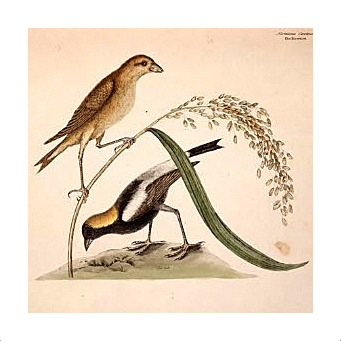
Catesby's Bobolink
He noted that this and other proto-guides focused on the visual, essentially ignoring the sounds birds made. For instance, in Catesby's work, mention of sound is often absent: when he did reference bird sounds, he compared them to the sounds made by similar European birds, usually characterizing the sounds made by the New World birds as inferior. This was a feature of what we refer to today as the "degeneracy theory," which depicted American birds and wildlife as smaller, weaker and more degenerate than their European counterparts. This type of characterization was also a political statement, which implied that the New World and its inhabitants - both human and animal - were also inferior to their European equivalents.
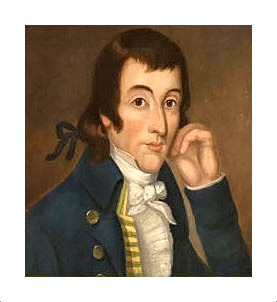
Other American natural history writers opposed this degeneracy characterization. (One such writer, Thomas Jefferson, devoted nearly an entire chapter in his Notes on the State of Virginia to refuting it.) They instead affirmed America, and claimed that American wildlife and birds were strong and robust, much like the young nation itself. But even given this effort, Audubon and other proto-guide writers still maintained what was essentially a Eurocentric outlook on American natural history: a reimagined colonial fantasy of "wild" America. Also interesting to note, the audience for Audubon's work was very much the same as Catesby's and other earlier writers: an elite upper class, as well as institutions such as libraries and museums,
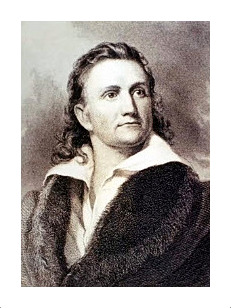
Audubon
Summing up the proto-guide era, Frank reiterated that the proto-field guides were about the following: solidifying colonial holdings by assigning names to things using the Linnaean system as comprehensively as possible; speculating on, and then justifying colonial economic activities, like the plantation system; advancing a predominately visual orientation to the natural environment in line with European values and traditions; and generally depicting America as a wilderness ripe for exploration and exploitation, even though it wasn't that much of a wilderness anymore.
The second era that Frank explored - the late 19th century - produced what were arguably the first "real" field guides. These new works shed their colonial-domination-of-the-natural-world orientation. Instead the focus became the development and encouragement of study of the natural world by amateurs and hobbyists. What we today call birding was promoted as a pursuit for children and adults because it yielded good health and good morals, very different from the previous emphasis as an activity for elites preoccupied with the desire to exert hierarchical control.
Many, if not most, of these works were authored by women. At the time, women were not able to vote, and their means of expression was severely limited. In response to these restrictions, women instead used their authority over the domestic space as an entry point, giving them a position from which they could engage in the general dialogue and discuss broader issues. Authors like Florence Merriam Bailey (who authored Birds Through an Opera Glass), and many other women wrote books that were, on the surface, mostly about birds, gardens, and plant and animal life found in gardens;
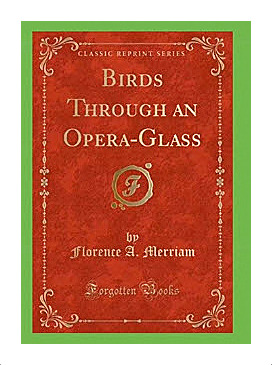 but these books had influence far outside the garden, in that they presented viewpoints on other issues, especially conservation. These works had other broad cultural impacts too. Also worth considering, at this time - the 1890s - the American frontier had effectively closed, so a historical moment existed, providing an opportunity to present an entirely new mindset, quite different from that of the ever-expanding-westward colonial viewpoint.
but these books had influence far outside the garden, in that they presented viewpoints on other issues, especially conservation. These works had other broad cultural impacts too. Also worth considering, at this time - the 1890s - the American frontier had effectively closed, so a historical moment existed, providing an opportunity to present an entirely new mindset, quite different from that of the ever-expanding-westward colonial viewpoint.
These new works, penned mostly by women, were holistic and considered all of nature as a unity. They emphasized all the senses, especially the sounds that birds made, in marked contrast to the visual emphasis of the colonial era proto-guides. Bailey in particular lectured readers to train not only their eyes, but their ears as well, and to catalog every sound that they heard. They realized that sounds were an excellent, and in many ways, superior way of identifying the avian life that they found all around them. Thus, she reconfigured the sensory hierarchy that had been established in the colonial era books, making sound equal to sight, casting the two as complementary, with both essential to the aspiring naturalist.
Mabel Osgood Wright's Birdcraft was another important work of this era. She explained that, if one wished to become an ornithologist, much scientific study over time was necessary, and there was a professional path to gaining this knowledge, an infrastructure for that career. But for the person casually interested in birds, there was no such infrastructure. Her book filled this need and was intended for the hobbyist who could not devote years to study. Like Bailey, Wright gave sounds a prominent role, and emphasized birds as a harmonious part of a larger natural schema.
The third work of this era that Frank discussed was Neltje Blanchan's Birds Every Child Should Know. The values embedded in Bailey's and Wright's earlier works are overwhelmingly present in this book.
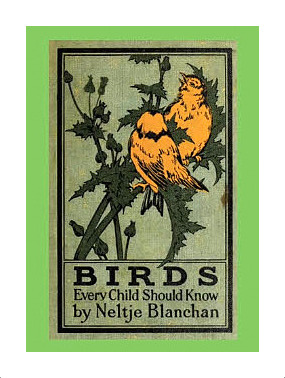 Blanchan's great objective and belief was that, through sensory training and the corresponding environmental literacy that it brought about, one can achieve happiness, health, and compassion. Essentially she said that by bettering our understanding of the natural world around us, we can better ourselves. Her bird descriptions are tactile, highly detailed, anthropomorphized and value-laden: for instance, she describes the House Wren as virtuous, because it eats so many insects that bother us. In addition, she explicitly positions herself at odds with men of science, emphasizing birding as a hobby that anyone, including women and children, can learn. The "modern" notion that anyone can learn about birding, and, in fact, the natural world, had its roots in these women's works. This democratization of learning about the natural world was aided by the fact that, by this time, books and paper were mass produced, and railroads went nearly everywhere, making books available widely to just about everyone.
Blanchan's great objective and belief was that, through sensory training and the corresponding environmental literacy that it brought about, one can achieve happiness, health, and compassion. Essentially she said that by bettering our understanding of the natural world around us, we can better ourselves. Her bird descriptions are tactile, highly detailed, anthropomorphized and value-laden: for instance, she describes the House Wren as virtuous, because it eats so many insects that bother us. In addition, she explicitly positions herself at odds with men of science, emphasizing birding as a hobby that anyone, including women and children, can learn. The "modern" notion that anyone can learn about birding, and, in fact, the natural world, had its roots in these women's works. This democratization of learning about the natural world was aided by the fact that, by this time, books and paper were mass produced, and railroads went nearly everywhere, making books available widely to just about everyone.
Summarizing the second era, the first field guides were authored largely by women and had a domestic orientation, rather than continental. Hallmarks of these works included these: a diversified portrayal of the senses; lyric and embellished descriptions of birds and other wildlife; and a didactic tone regarding bird study and conservation as a form of moral improvement.
The era of the modern field guide began in 1934 with Roger Tory Peterson's A Field Guide to the Birds, which represented yet another significant paradigm shift. By this time birding as a pastime had become very popular and was no longer an esoteric sideline.
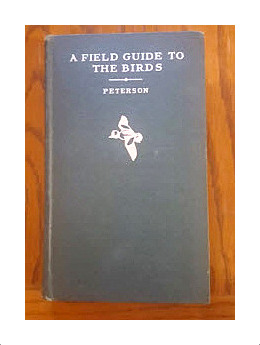
Peterson's guide was marked by a return to the more visual orientation that was common in the colonial proto-guide era, and his goal was to facilitate rapid visual identification in the field, brought about by intense sensory training of the eyes. He explicitly states that, "We make our first identification of a bird as a species by sight." This view contradicts the books of the previous era, as well as our own experience: seasoned birders know that identifying a bird by sight alone can be risky, sometimes impossible, and that birdsongs are often more reliable and accurate identifiers.
The Petersonian move was to separate field identification from other values of birding, such as nature appreciation, conservation, and even good personal health. Rapid and accurate field identification achieved through clear visual recognition of the bird was positioned as the primary objective of birding, with other considerations not necessarily dismissed, but deemed to be beyond the purview of an effective field guide. To accomplish this goal, Peterson explicitly directs his readers to focus their attention on the visual aspects of the bird - field marks. His style borrowed its rationale from scientific and professional study and applied it to the identification aspect of the hobby.
It should be noted that this rhetorical focus moves authority away from the domestic female space and back into the male space of science. Further, Peterson states, "It is the discovery of rarities that puts real zest into the sport of birding, a zest that many of us would like to interpret as scientific zeal, rather than the quickening of our sporting blood."
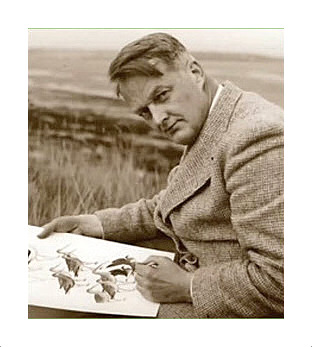
Roger Tory Peterson
The earlier generation of guides had already helped transform birding into a hobby that was somewhat connected to scientific study. But these earlier guides differed from Peterson's in that they unrestrainedly appreciated birds as a part of nature, seamlessly and holistic connected. What's more, they instilled the natural world with values from which we were able to derive and improve our own values. In the Petersonian model, there is a move to artificially (by his own admission) connect birding to scientific study. Birding was re-inscribed by Peterson as a masculine activity, imbued with masculine values: detachment, no emotionality, even a kind of dominion over nature, as we saw in the proto-guides.
What's more, geographical areas covered by field guides came to be designated by political boundaries instead of domestic boundaries, another return to a nation-affirming priority of the colonial era guides. For instance, books about birds found in gardens became Birds of America. It can be argued that the Petersonian orientation actually decouples birds from their environments and trains field guide users to ignore environmental issues by depicting birds as separate entities, detached from their environments, rather than enmeshed within them.
Frank went on to raise many more provocative questions. For instance, what values do field guides promote that are not explicitly expressed in the text? What role does consumerism play? Do modern field guides promote the commodification of the natural world? What makes a field guide different from a catalog? He closed by explaining that these and many other such issues are much discussed topics these days.
Following the presentation, Frank answered several thoughtful questions that had been typed into the Zoom chat feature by listeners.
Sheree then thanked Frank for his excellent presentation. She wished everyone well, cautioned us to stay safe, and adjourned the meeting.
— prepared by Frank Moone on 10-29-2020





